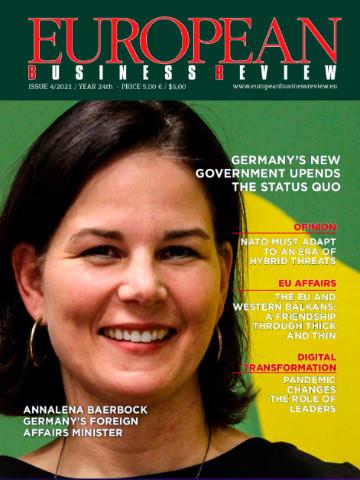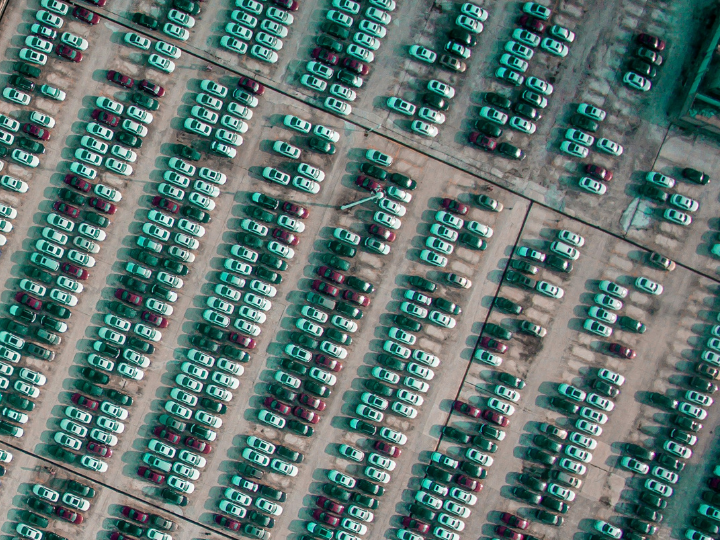by Aurelie Pugnet
NATO members are considering transitioning coordination of military deliveries to Ukraine as well as a €100 billion fund to secure long-term support and be able to weather any major political shift across the Western military alliance.
The Western military alliance is considering ways to protect and assure long-term support to Ukraine, based on a plan tabled by NATO Secretary-General Jens Stoltenberg, dubbed the ‘Mission for Ukraine’ proposal.
There is a growing consensus among NATO’s 32 members – including Germany and the United States – to move to take over the tasks of the US-led Ramstein Coalition, which coordinates military (lethal and non-lethal) support to Kyiv, firmly into the structures of the military alliance for the first time, according to several NATO diplomats briefed on the matter.
The move was until now regarded as difficult by some more cautious NATO members due to concerns that it could make the alliance a belligerent in Russia’s war against Ukraine.
While the proposal is still at an early stage, according to the people familiar with the matter, NATO foreign ministers meeting in Brussels on Wednesday and Thursday (3-4 April) are expected to discuss the topic to decide further steps at the Washington summit of NATO leaders in July.
Ramstein is meant to address the needs of the war but it is on an ad hoc basis, the people close to the matter stressed, and an institutionalised structure could give a perspective, and already plan the future look of Ukraine’s military.
It is for now unclear which tasks NATO would potentially take over.
“There are many questions still unanswered,” one official said.
Whether NATO would be in charge of coordinating lethal military aid deliveries or remain limited to non-lethal aid, as it has been until now, is uncertain, with Hungary and Slovakia wary of supporting Ukraine with lethal deliveries.
Over the past two years, Russian military officials have warned against NATO getting involved in the war in Ukraine.
But Western diplomats in favour of the move said they do not consider this as NATO becoming a party in the war.
Euractiv understands that the first step of the new Ukraine plan could entail equipping and training Ukrainian forces, with the facilitation of military deliveries to Ukrainian territory potentially coming at a later stage.
It is also to be determined what additional financial burden the move would put on the Western military alliance.
Upgrading NATO’s common budget to pay for administrative resources has long been a matter of dispute between Western allies.
‘Trump-proof’ fund
In addition, NATO’s secretariat – the advisory and administrative body of the military alliance – advised the allies to pledge a €100 billion fund for Ukraine, for military support too.
A similar figure has been floated in EU circles, with Internal Market Commissioner Thierry Breton having said this would be what the EU’s industry would need to become war-ready, and Estonia saying this is what it considered needed for Ukraine’s victory.
It is, however, unclear what analysis supports this exact figure, two people close to the discussions said.
Over the past two years, NATO allies already provided around €100 billion of military support, Euractiv understands.
Where the new money would stem from, and how long it would last, is also to be discussed at this stage, including whether bilateral aid would be factored into that sum.
NATO’s budget is not big enough to shoulder such a financial burden, which means the fund would have to be based on members’ contributions, according to a specific accounting key.
This proposal, people with knowledge of the discussions said, would have three main goals.
First, to protect the Western alliance from any political disruption, more specifically to ‘Trump-proof’ it against a future US president reluctant to support Kyiv, or any other major changes on the European continent, where governments are slowly leaning towards the right and questioning continued aid, such as in Slovakia and Hungary.
Secondly, such a large sum and an institutionalised cooperation hub, rather than an ad hoc working basis, could make the provision of aid more sustainable and work as a guarantee for the longer haul.
Lastly, the people familiar with the talks said, the move would bring Ukraine closer to accession to the military alliance, which NATO promised at the Vilnius summit last July, and answer both current needs and the future model of Ukraine’s armed forces.
Reforms in Ukraine are not discussed in the current Ramstein format, but connecting NATO’s work on military aid deliveries with the expected reforms would create a link between NATO support and Ukraine’s path to membership.
NATO planners would also get an overview of what Ukraine’s military structure would look like in the future and what kind of equipment it would need to fit that model.
*first published in: Euractiv.com




 By: N. Peter Kramer
By: N. Peter Kramer

